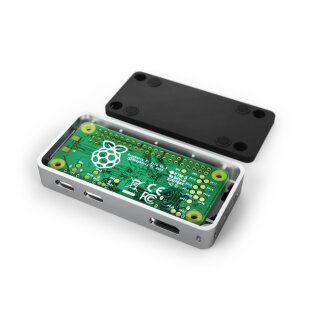
We recommend Raspberry Pi 4 or Raspberry Pi 400 with 4 GB RAM at a minimum-but the more, the better. Using a 1080p (or lower) resolution also works a fair bit better than trying to push a 1440p or 4K display, but your mileage may vary based on your use case. We also recommend trying USB3 storage as your boot drive, as it should be faster than a microSD card. Since Raspberry Pi 4 tends to throttle due to heat under desktop loads, cooling will help it stay more responsive. We would definitely recommend using some sort of cooling with your Raspberry Pi, whether that’s a a heatsink and fan (like the recently-announced Raspberry Pi 4 Case Fan), or a passive case like one from Flirc-my favorite for its looks and silence. There are also some things you can do to improve performance. Still, for a computer coming in at under $100, it’s impressive and perfectly usable for several tasks. GTK3 does not offer GPU-accelerated animations, so animations within apps are less smooth than we would like. Thanks to all of the folks at Canonical and in the Ubuntu community who have worked to make that happen! PerformanceĮlementary OS on Raspberry Pi 4 is not going to match the polished experience of a full modern desktop computer, largely due to our current software stack. Since Ubuntu has released Raspberry Pi images, we are able to rely on that work to ship a supported and updated kernel. Like with Pinebook Pro, there are some things you should know if you plan to use elementary OS Early Access builds on Raspberry Pi: Kernel It would even be possible to run the same network services on the hardware from within elementary OS just so you get a nice modern GUI when doing any local management. In fact, this blog post was written entirely on my Raspberry Pi 4 running elementary OS.


While it won’t compete experience-wise with a high end desktop, it is a real option for casual computing, development, and writing. However, I’ve been using elementary OS builds on it for the past week, and I’m impressed. a DNS server and for network-attached storage. Personally, I typically use Raspberry Pi 4 as a network device, e.g. My current desktop, powered by a Raspberry Pi 4 running elementary OS However, if you’re one of the many folks with a Raspberry Pi 4 sitting around and wanted to see how a full, modern desktop operating system runs, elementary OS is now an option! Like Pinebook Pro builds, Raspberry Pi support is considered an experiment and is not something we have committed to officially support indefinitely. Cassidy James Blaede Co-founder & CXO Fri, Dec 4, 2020įollowing our efforts to bring elementary OS to the ARM-based Pinebook Pro, we’ve added experimental builds for the ARM-based Raspberry Pi 4 series-including the recently-launched Raspberry Pi 400-to our Early Access program.


 0 kommentar(er)
0 kommentar(er)
